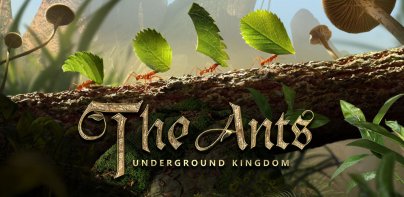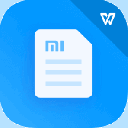








Best Arduino Projects

Perihal Best Arduino Projects
Arduino is an open-source prototyping platform based on easy-to-use hardware and software. Arduino boards are able to read inputs - light on a sensor, a finger on a button, or a Twitter message - and turn it into an output - activating a motor, turning on an LED, publishing something online. You can tell your board what to do by sending a set of instructions to the microcontroller on the board. To do so you use the Arduino programming language (based on Wiring), and the Arduino Software (IDE), based on Processing.
That actually says it all.
You can find the complete introduction here.
Maybe a little more information about the board:
The Arduino Board itself is a blue circuit board, the size of a credit card (but they also have models in other sizes). It has two rows of connectors (the 'headers'), a power connector and a USB connector. The brain of the board is an Atmel microcontroller. It's like a really small, very low power 'computer'. (It only has 32KB of storage, 2KB of RAM, and the 8-bit processor runs at only 16MHz.) For most applications, however, this is more than enough. The pins of the processor connect to the headers, and you can connect them to virtually anything you can imagine. You just need to write some lines of code to control them. The I/O pins (Input/Output) can be used as input pins, to connect buttons or knobs, temperature sensors, light sensors, or even keyboards and mouses, digital musical instruments … or they can be used as output pins, to connect LEDs, drive motors, control the lights in your home, connect to small displays or even connect to the Internet, so that it can check your mail, post tweets ... Through the USB connection you can also use it to control your computer, or use your computer to control the Arduino.
As you can see, the sky's pretty much the limit !
Arduino is a popular open-source development board for engineers and makers to develop electronics projects in an easy way. It consists of both a physical programmable development board (based on AVR series of microcontrollers) and a piece of software or IDE which runs on your computer and used to write and upload the code to the microcontroller board.
Explore below some interesting arduino projects and tutorials based on different types of arduino baords like Arduino Uno, Arduino Pro Mini, etc. These DIY arduino projects for beginners are explained well and you can find the complete guide to DIY these projects with the help of circuit diagrams, source codes and videos. You can also browse below pages to get new arduino project ideas.
Arduino adalah platform prototaip sumber terbuka berdasarkan perkakasan dan perisian yang mudah untuk digunakan. papan Arduino dapat membaca input - cahaya pada sensor, jari pada butang, atau mesej Twitter - dan mengubahnya menjadi output - mengaktifkan motor, menghidupkan LED, menerbitkan sesuatu dalam talian. Anda boleh memberitahu papan anda apa yang perlu dilakukan dengan menghantar satu set arahan untuk pengawal mikro di papan. Untuk berbuat demikian anda menggunakan bahasa pengaturcaraan Arduino (berdasarkan Wiring), dan Software Arduino (IDE), berdasarkan pemprosesan.
Yang benar-benar mengatakan ia semua.
Anda boleh mencari pengenalan lengkap di sini.
maklumat mungkin sedikit lebih lanjut mengenai lembaga:
Lembaga Arduino sendiri adalah papan litar biru, saiz kad kredit (tetapi mereka juga mempunyai model-model dalam saiz lain). Ia mempunyai dua baris penyambung (yang 'pengepala'), penyambung kuasa dan penyambung USB. Otak lembaga adalah mikropengawal Atmel. Ia seperti benar-benar kecil, kuasa yang sangat rendah 'komputer'. (Ia hanya mempunyai 32KB penyimpanan, 2Kb RAM, dan pemproses 8-bit berjalan pada hanya 16MHz.) Bagi kebanyakan aplikasi, bagaimanapun, ini adalah lebih daripada cukup. Pin pemproses menyambung kepada tajuk, dan anda boleh menyambung mereka untuk hampir apa sahaja yang anda boleh bayangkan. Anda hanya perlu menulis beberapa baris kod untuk mengawal mereka. I / O pin (Input / Output) boleh digunakan sebagai pin input, untuk menyambung butang atau tombol, sensor suhu, sensor cahaya, atau papan kekunci dan mouses, alat muzik digital ... atau ia boleh digunakan sebagai pin output, untuk menyambung LED, motor drive, mengawal lampu di rumah anda, menyambung ke paparan kecil atau menyambung ke Internet, supaya ia boleh menyemak mel anda, tweet post ... Melalui sambungan USB anda juga boleh menggunakannya untuk mengawal komputer anda, atau menggunakan komputer anda untuk mengawal Arduino.
Seperti yang anda lihat, langit yang cukup banyak had!
Arduino adalah papan pembangunan sumber terbuka popular untuk jurutera dan pembuat untuk membangunkan projek-projek elektronik dengan cara yang mudah. Ia terdiri daripada kedua-dua papan fizikal boleh program pembangunan (berdasarkan siri AVR pengawal mikro) dan suatu perisian atau IDE yang berjalan pada komputer anda dan digunakan untuk menulis dan memuat naik kod untuk papan pengawal mikro.
Jelajahi bawah beberapa projek arduino menarik dan tutorial berdasarkan jenis baords arduino seperti Arduino Uno, Arduino Pro Mini, dan lain-lain projek arduino DIY untuk pemula dijelaskan dengan baik dan anda boleh mendapatkan panduan yang lengkap untuk DIY projek-projek ini dengan bantuan litar gambar rajah, kod sumber dan video. Anda juga boleh menyemak imbas bawah halaman untuk mendapatkan idea-idea projek arduino baru.
Arduino is an open-source prototyping platform based on easy-to-use hardware and software. Arduino boards are able to read inputs - light on a sensor, a finger on a button, or a Twitter message - and turn it into an output - activating a motor, turning on an LED, publishing something online. You can tell your board what to do by sending a set of instructions to the microcontroller on the board. To do so you use the Arduino programming language (based on Wiring), and the Arduino Software (IDE), based on Processing.
That actually says it all.
You can find the complete introduction here.
Maybe a little more information about the board:
The Arduino Board itself is a blue circuit board, the size of a credit card (but they also have models in other sizes). It has two rows of connectors (the 'headers'), a power connector and a USB connector. The brain of the board is an Atmel microcontroller. It's like a really small, very low power 'computer'. (It only has 32KB of storage, 2KB of RAM, and the 8-bit processor runs at only 16MHz.) For most applications, however, this is more than enough. The pins of the processor connect to the headers, and you can connect them to virtually anything you can imagine. You just need to write some lines of code to control them. The I/O pins (Input/Output) can be used as input pins, to connect buttons or knobs, temperature sensors, light sensors, or even keyboards and mouses, digital musical instruments … or they can be used as output pins, to connect LEDs, drive motors, control the lights in your home, connect to small displays or even connect to the Internet, so that it can check your mail, post tweets ... Through the USB connection you can also use it to control your computer, or use your computer to control the Arduino.
As you can see, the sky's pretty much the limit !
Arduino is a popular open-source development board for engineers and makers to develop electronics projects in an easy way. It consists of both a physical programmable development board (based on AVR series of microcontrollers) and a piece of software or IDE which runs on your computer and used to write and upload the code to the microcontroller board.
Explore below some interesting arduino projects and tutorials based on different types of arduino baords like Arduino Uno, Arduino Pro Mini, etc. These DIY arduino projects for beginners are explained well and you can find the complete guide to DIY these projects with the help of circuit diagrams, source codes and videos. You can also browse below pages to get new arduino project ideas.

























